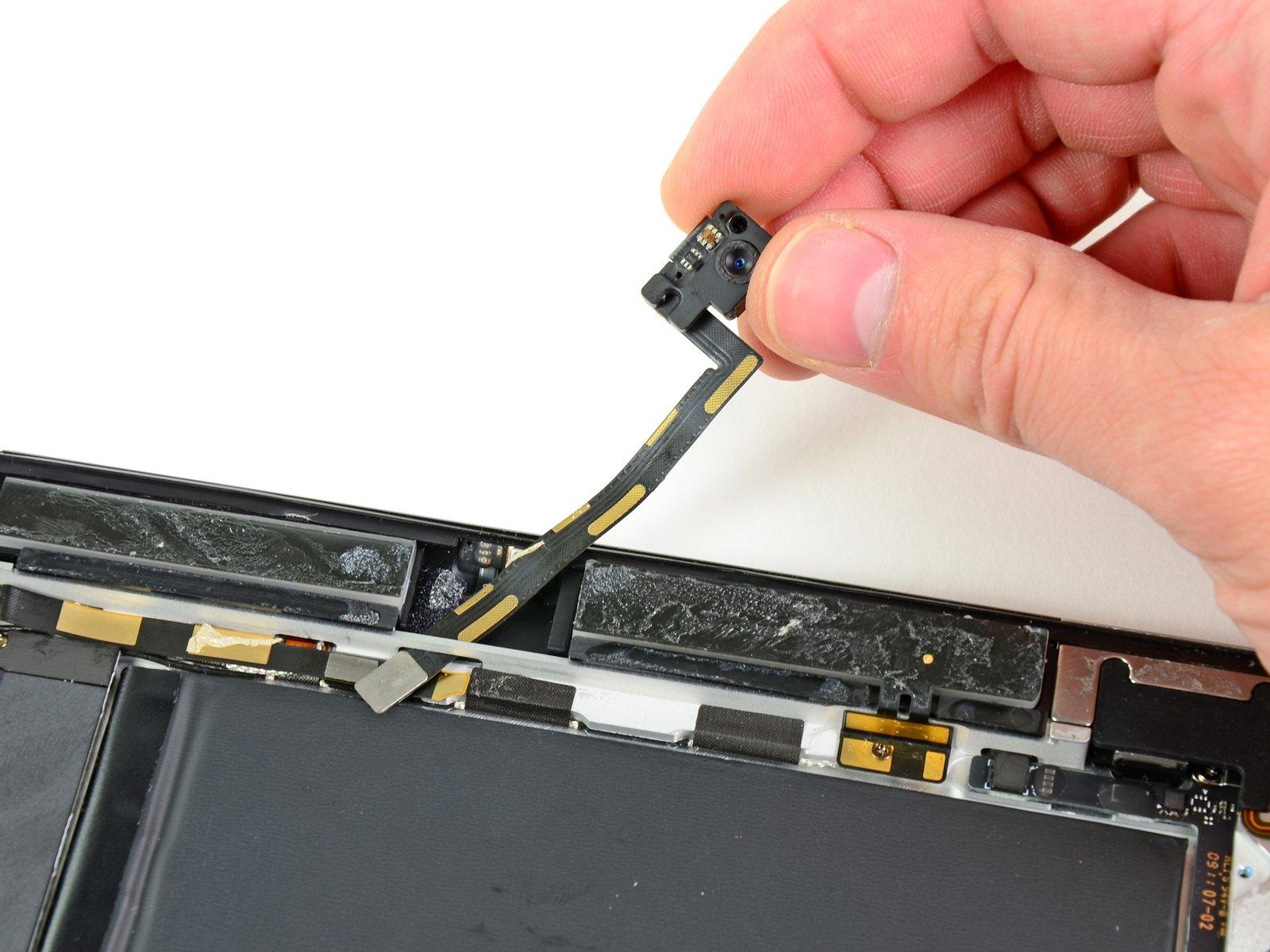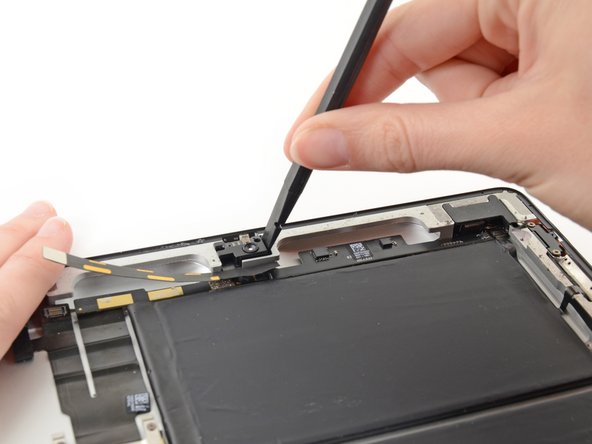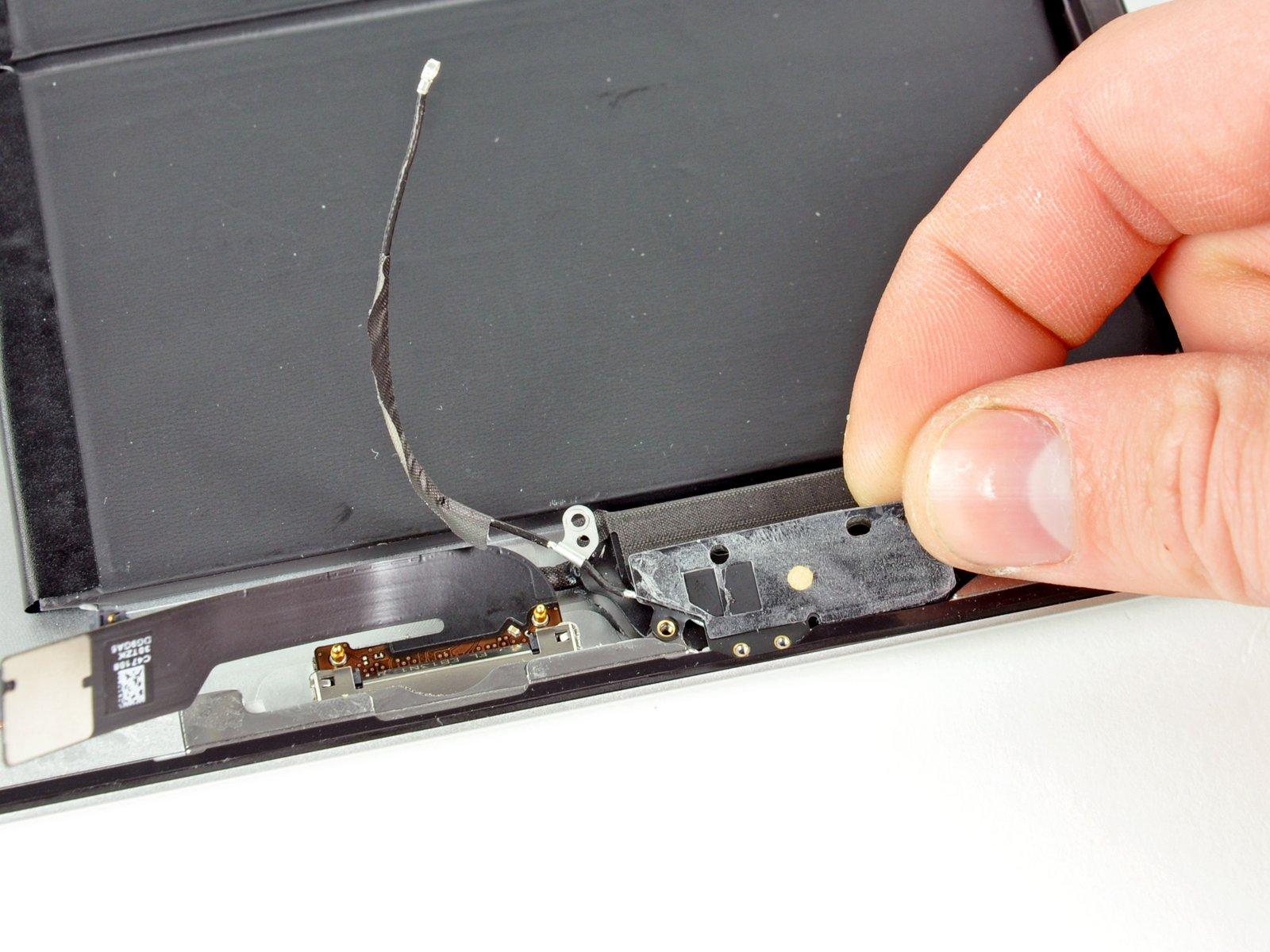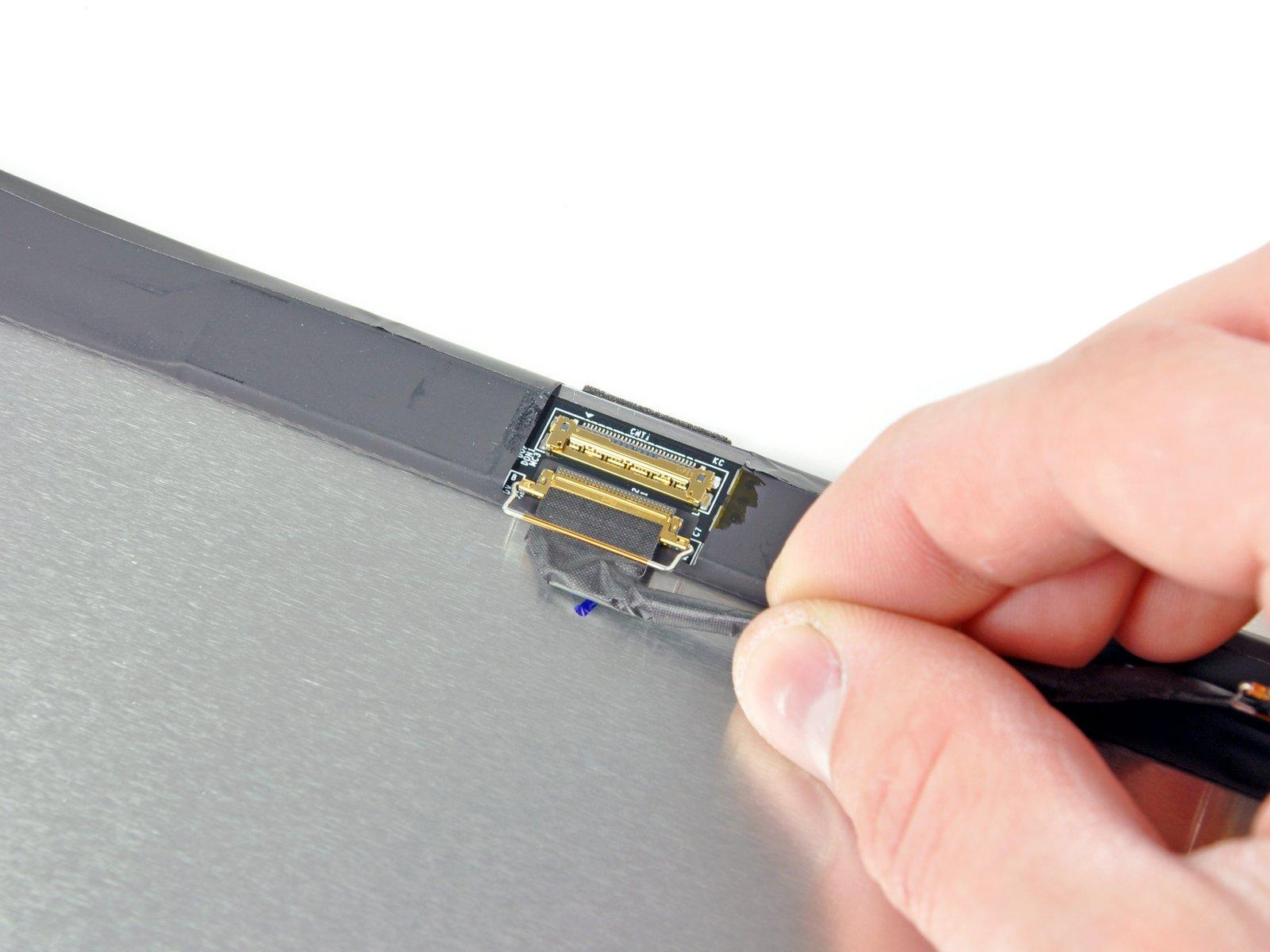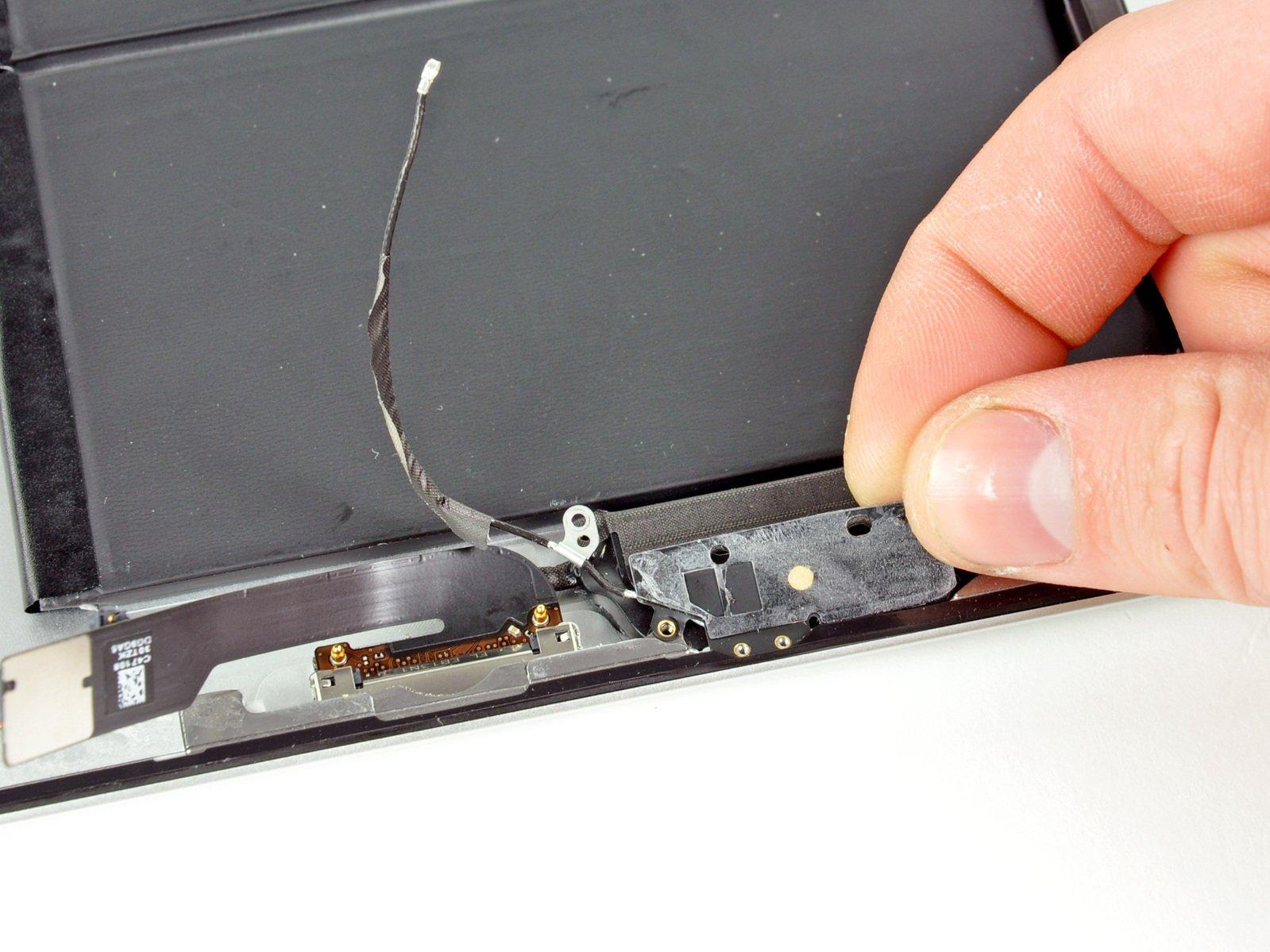How to Replace iPad Front Facing Camera – Wi-Fi EMC 2560
Duration: 45 minutes
Steps: 33 Steps
Hey there! Before you dive into this repair adventure, just a friendly reminder to take your time and follow each step carefully. If you hit a snag or need a hand, don’t hesitate to schedule a repair. You’ve got this!
Dive into this guide to swap out that front-facing camera and keep the world entertained with your awesome vlogs. Don’t let a little hiccup hold back your creativity!
Step 1
Before diving into the repair, it’s a good idea to give your microwave a little TLC. A quick clean can help prevent any stubborn bits of gunk from getting cozy with your iOpener. Trust us, your future self will thank you!
– Pop that iOpener right in the middle of the microwave and let the magic happen!
Tools Used
Step 2
Keep an eye on that iOpener—overheating it can lead to a dramatic burst! Let’s keep it below 100˚C (212˚F), shall we?
If your iOpener looks a bit puffy, steer clear! Safety first, friends.
Still feeling a bit too hot to handle? No worries! Just let it cool down for a bit before you give it another go. A well-heated iOpener will keep the warmth for about 10 minutes, so you’ve got time!
– Give that iOpener a cozy 30-second warm-up in the microwave.
– As you work through the repair, keep the iOpener toasty by reheating it for another 30 seconds whenever it starts to cool down.
Tools Used
Step 3
Careful there! The iOpener gets pretty toasty, so handle it with care. An oven mitt can be your best buddy here if you need it.
– Carefully take the iOpener out of the microwave, gripping one of the flat ends to steer clear of that hot center. Keep it cool!
Tools Used
Step 4
Don’t have a microwave? No worries! Just pop your iOpener into some boiling water to get it nice and toasty.
– Grab a pot or pan and fill it with enough water to give your iOpener a nice, cozy bath.
– Bring that water to a rolling boil and then turn off the heat—safety first!
– Carefully lower the iOpener into the hot water for about 2-3 minutes. Just make sure it’s fully submerged, so it gets all nice and toasty.
– Using some tongs, fish out the heated iOpener from the hot water—watch out, it’s going to be hot!
– Give your iOpener a good drying with a towel; we want it nice and dry for action.
– And voilà, your iOpener is all set to go! If it needs a little more warmth later, just repeat the steps: boil the water, turn off the heat, and let it soak for another 2-3 minutes.
Tools Used
Step 5
Put on those safety glasses to keep your eyes safe, and remember to treat that LCD screen with care – we want it to sparkle, not shatter!
– Got a cracked display? No worries! Start by taping up that glass to keep the shards contained and avoid any accidental pokes during your repair adventure.
– Grab some clear packing tape and lay overlapping strips over the iPad’s screen until it’s fully covered. It’s like giving your device a protective hug!
– Now, just follow the rest of the guide as best as you can. Keep in mind, once the glass is cracked, it might want to keep cracking as you work. You might need to bring in a metal prying tool to help scoop out the glass when it gets stubborn.
Step 6
Just a friendly reminder: while you’re tackling this repair, you might encounter some pesky broken glass. So, grab those safety glasses and keep those flying shards at bay! Your eyes will thank you for it.
– Place the iOpener flat against the right edge of your iPad, making sure it’s all nice and cozy for a solid connection between the iPad’s surface and the iOpener.
– Give it a moment to work its magic—let the bag chill on the iPad for about 90 seconds before you dive in to open up that front panel.
Tools Used
Step 7
Getting that wedged tip of your trusty opening tool between the glass and plastic might take a bit of elbow grease. Just take your time and be gentle—wiggle that plastic tool back and forth as needed, and you’ll be on your way in no time!
– Look closely at the upper right corner of your iPad—there’s a tiny gap in the adhesive ring, about 2.0 inches (~5 cm) down from the top. This little imperfection is your golden opportunity!
– Now, let’s get to work! Position your tool near the mute button and gently slide the tip of a plastic opening tool into that gap between the front glass and the plastic bezel. Just insert the very tip—enough to give that crack a little nudge and open it up.
Step 9
– With the plastic opening tool snugly placed between the front glass and plastic bezel, gently slide a plastic opening pick into the gap right next to the tool. You’re doing great!
Step 10
– Gently take out that plastic opening tool from the iPad and slide the opening pick deeper under the front glass until it reaches about half an inch in. You’ve got this!
Step 12
The adhesive is super strong, so you might need to put in a little elbow grease. Take your time and be gentle!
If you spot the tip of the opening pick peeking out from under the front glass, give it a gentle tug. While it’s totally safe to use the pick at this depth, just a heads up that it might leave a bit of adhesive residue on the LCD. No biggie, though!
– As the iOpener warms up the bottom edge, let’s get to work on the right side of the iPad by gently peeling back the adhesive.
– Take your opening pick and glide it down the edge of the iPad, carefully loosening the adhesive along the way.
Tools Used
Step 13
As you start peeling away the adhesive, you might want to slide that warm iOpener back onto the right edge of the iPad. Whether you need to do this or not depends on how long your iPad has been chilling while you’ve been busy working your magic.
– If your opening pick is feeling a bit sticky in the adhesive, just give it a little ‘roll’ along the edge of the iPad. Keep it moving to help break free that stubborn adhesive.
Tools Used
Step 14
– Before you tackle that first opening pick in the bottom corner of your iPad, slide a second pick under the right edge of the front glass to keep that pesky adhesive from sticking back down.
– Give your iOpener a little heat boost, then place it at the top edge of the iPad.
Tools Used
Step 15
The Wi-Fi antenna is snugly attached to the bottom right corner of the rear case of your iPad with some screws and a cable. Since the Wi-Fi antenna is positioned in a way that requires a little finesse, be careful as you work. A slip could lead to some serious damage to that antenna, and we want to keep everything working smoothly!
– Take a deep breath and get ready for some precision work! Just a heads up, the next steps call for a gentle touch. You’re going to want to carefully peel away the adhesive that holds the antenna to the front panel. Make sure to keep an eye on those delicate connections at the bottom of the iPad – we want them safe and sound! Follow these next steps closely and you’ll do great!
Step 16
Avoid sliding the pick too far past the bottom right corner. Doing so could put a dent in your Wi-Fi antenna, and we definitely don’t want that!
– Gently glide the opening pick around the bottom right corner of the iPad to free up that stubborn adhesive. You’ve got this!
Step 17
As you glide the opening pick along the bottom right edge of the front panel, keep in mind that the Wi-Fi antenna is lurking just around the corner. If you’re not careful with the adhesive, you might accidentally give it a little haircut!
Just gently wiggle that pick out from under the front glass—no need to yank it all the way out! Leave about 1/8″ (3 mm) of the tip cozy under there.
– Gently glide the opening pick along the bottom edge of your iPad to free the adhesive around the Wi-Fi antenna. You’ve got this!
Step 18
– After you’ve navigated past the Wi-Fi antenna (which is about 3″ (75 mm) from the right edge, or just next to the home button), slide that opening pick back in all the way. You’ve got this!
– Now, gently slide the pick to the right. This will help free the adhesive that’s keeping the Wi-Fi antenna snug against the front glass. Easy peasy!
Step 19
Keep the iOpener chill—no more than a minute in the heat, and let it cool down for at least two minutes before giving it another go!
If the glue has cooled down a bit too much along the bottom edge, give that iOpener a quick reheat to warm up the adhesive where you’re working. You’re doing great!
– Keep peeling away the adhesive at the bottom of your iPad. As you do, gently pull the opening pick out far enough to navigate around the home button. Once you’ve passed the home button, pop that pick back in to a depth of about 1/2 inch (10 mm). You’ve got this!
Tools Used
Step 20
– Keep on peeling that adhesive all the way across the bottom edge of your iPad. You’re doing great!
– Once you’ve got that adhesive sorted, just leave the opening pick snugly in place under the front glass near the home button. It’s your trusty little sidekick!
Step 22
If the adhesive has gotten a bit too cool, just swap the iOpener to the top edge and keep at it! If the iOpener itself has chilled out too much, simply give it another warm-up!
– Gently slide the opening pick along the top edge of your iPad, giving it a little tug to navigate around the front-facing camera bracket.
– The adhesive in this area is pretty strong, so you might need to apply some elbow grease. Take your time and be cautious to avoid slipping and causing any harm to yourself or your iPad.
– If your opening pick feels like it’s stuck in the adhesive, try ‘rolling’ it as demonstrated in step 9.
Tools Used
Step 23
Once the adhesive is nice and toasty, feel free to take the iOpener off the iPad for a smoother experience. But if it’s still hanging on for dear life, just give the iOpener another heat-up and place it on the left edge while you work your magic.
– Keep peeling away the adhesive at the top edge of the iPad, and gently maneuver the opening pick around the top left corner.
Tools Used
Step 24
The digitizer cable is hanging out around 2 inches (50 mm) from the bottom of your iPad. When you slide that pick, take a break when you reach about 2.25 inches (60 mm) from the bottom. You’re doing great!
– Gently glide that opening pick along the left edge of your iPad, freeing up the adhesive bit by bit. The adhesive here is pretty thin because of the digitizer running along the whole left side. Just remember to keep the pick shallow (no more than 1/2 inch or 10 mm) to avoid any mishaps with the digitizer.
Step 25
Be super careful! The bottom of the digitizer cable is only about 1 inch (25 mm) from the iPad’s edge. Take your time and work slowly to avoid accidentally cutting this cable.
– With that handy opening pick still nestled under the bottom edge of your iPad, gently free the adhesive in the bottom left corner. You’re doing great!
Step 26
– Grab one of those nifty opening picks and gently lift up the bottom right corner of the iPad. Once it’s popped up, give it a friendly pinch with your fingers to hold it steady!
Step 27
Watch out for any leftover adhesive that might still be clinging on! Grab an opening pick and gently slice through any sticky bits that could be keeping the front panel in place.
– Grab your iPad by the top and bottom right corners, and give that front glass a gentle twist away from the device. It’s like giving it a little hug to let it go!
– When you’re putting everything back together, don’t forget to use a microfiber cloth and some compressed air to banish any pesky dust or fingerprints from the LCD before you lay that glass back down. A clean screen is a happy screen!
Step 28
– Let’s kick things off by unscrewing those four 2.0 mm Phillips screws that are holding the LCD to the rear case. You’ve got this!
Step 29
The front panel ribbon cables hang out just beneath the LCD. To reach them, you’ll need to gently flip the LCD over and give it a little breather. You’ve got this!
– Gently lift the LCD from the edge nearest to the volume buttons and flip it out of the rear case—just like turning the page of your favorite book!
– Carefully place the LCD face down on the front panel.
Step 31
– Gently use the flat end of a spudger to lift the connector out of its cozy spot on the control board. You’ve got this!
Step 33
– Gently lift the front-facing camera away from the foam adhesive that’s keeping it cozy against the rear case.
– Carefully detach the front-facing camera and set it aside.
